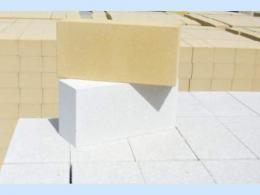Search
Login
All about silicate brick, how to do it, where it is applied and how to choose
The centuries-old history of building bricks with each era only strengthened its popularity as the most reliable building material. One can argue a lot about what is still better to build and there will be enough arguments for the supporters of the tree, but the brick has no equal in terms of durability, and is unlikely to appear in the near future. To us, ordinary people, by and large, only two types of bricks are known red and white. Logic suggests that the differences between these two species in the composition of the components from which they are made. But in terms of broadening the horizons, it is necessary to possess at least some of the information about the properties and characteristics of the building material from which our house will be built. Therefore, let's talk a little about white silicate brick, according to statistics the most popular material for walling.
Content
- Silicate brick video
- Characteristics of silicate brick
- Types of silicate brick
- Silicate brick production video
- Application of silicate brick
Silicate brick
Silicate brick belongs to the category of artificial building materials, that is, made from synthetic components. Silicate is the mixture from which this type of brick is made. It includes lime and sand. The proportions are the following nine parts of quartz sand and one part of lime.

To create the correct brick shape during the manufacturing process, special plastic additives are mixed into the composition. Also recently, manufacturers have added chemically resistant pigments to the composition, which allow them to obtain different colors, mostly you can often find yellow silicate brick, from which more and more not only private, but also apartment buildings are being built. Like any building material, silicate brick has its own advantages and disadvantages. Let's consider in order those and others. The undoubted advantages of silicate brick are:
- high environmental friendliness components for production are natural and non-harmful to the environment
- high strength it is very difficult to destroy a folded brick wall
- excellent sound insulation, which is well suited for the manufacture of exterior walls, sound from the street will not penetrate into the room
- frost resistance on this indicator silicate brick surpasses light concrete grades
- resistance to environmental influences, silicate brick facades retain color and shape perfectly despite any nature's vagaries, of course if there is no aggressive environment or the climate is very humid
- paintwork silicate brick can be painted relatively easily and without serious consequences
- a wide range that allows you to use silicate brick for different types of work and select it according to the color scheme
The disadvantage is, in fact, one silicate brick is not a moisture resistant material, therefore it can not be used for the construction of basements, basement floors and can not be used for facing wells, artificial ponds and so on. It is also advisable not to use silicate brick for the manufacture of structures that are exposed to high temperatures, the internal surfaces of stoves, fireplaces and chimneys. As you can see, there are much more advantages, otherwise silicate brick would not be so popular among modern builders. New technologies make it possible to produce special types of silicate bricks, perfectly suited for the construction of original structures.
Characteristics of silicate brick
The main characteristics of silicate brick are its size and weight. Standard brick has the so-called normal format (NF), fixed by GOST - 250 mm in length, 120 mm in width and 65 mm in height. Also in GOST there is also a special brick with dimensions of 250x85x65 0.7 NF, as well as a very rare 1.3 NF (288x138x65 mm). The weight of a full-bodied silicate brick is about 4 kilograms, may vary slightly depending on the composition of the components.

The weight of samples with voids can vary from 2 to 3.5 kg, due to the number of holes. One of the important characteristics of silicate brick is its high density in comparison with a ceramic counterpart. Most manufacturers give a guarantee for silicate brick for at least 50 years. Another important characteristic is the cost of the product. The simplest building white silicate brick costs from 8 rubles apiece, and the cost of silicate brick with various additives and irregular shapes starts from 10 rubles. The most popular corpulent yellow silicate brick costs large sellers in the region of 17-20 rubles apiece.
Types of silicate brick

There are several types of silicate bricks, different in size and functional purpose. In size, they distinguish:
- single silicate brick
- one and a half silicate brick
- double silicate brick
By methods of application, the most common are:

- simple building solid brick
- hollow building brick
- facing silicate brick
It should also be noted that on sale you can find figured silicate brick, as well as colored, which is a big plus, since the painted white silicate brick does not look quite beautiful and it is better to use ready-made colored ones in the decoration.

Silicate brick production
The production process of silicate brick is best demonstrated by a video showing all the cycles of the production chain and basic technological methods.
There are a lot of manufacturers of silicate brick, so when buying, you should pay attention to the reputation of the manufacturer.
Application of silicate brick
Silicate brick is used primarily for the construction of load-bearing and self-supporting walls and partitions, it is well suited for the construction of multi-story buildings, less often for the installation of internal partitions and filling voids in monolithic-concrete structures.

It is also used for laying the outer part of chimneys. An important point when buying is not to confuse the yellow silicate brick with a refractory brick that has the same color and similar structure. This question must be clarified with the sellers.





